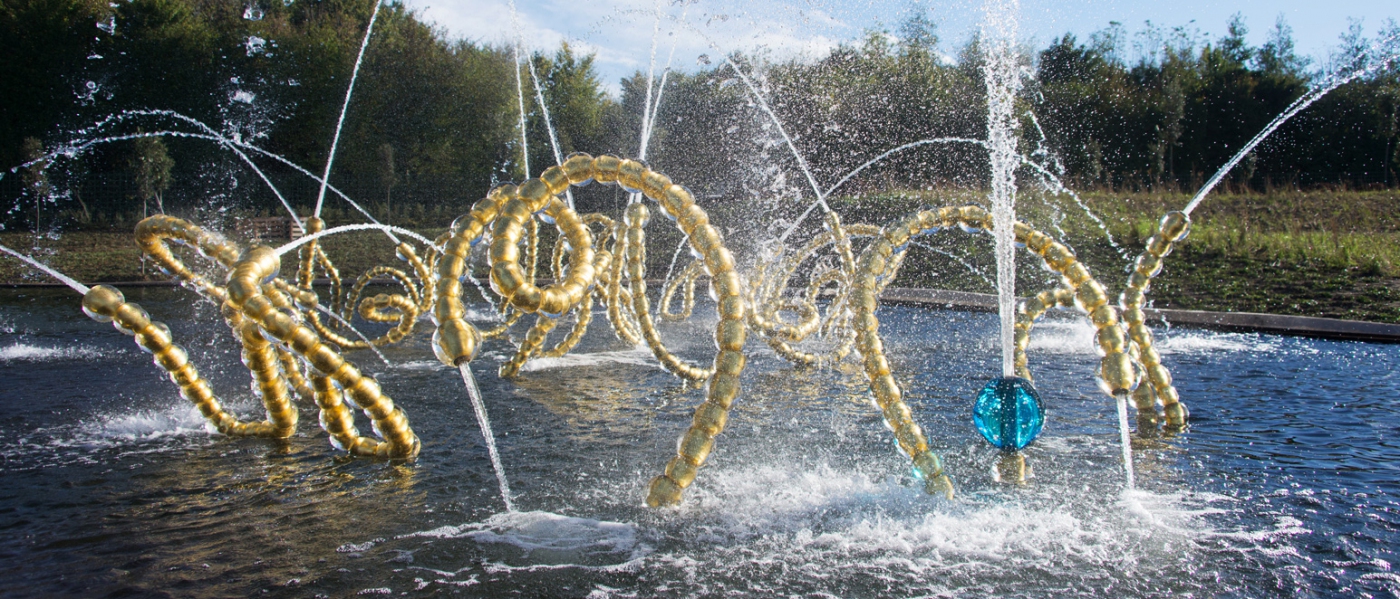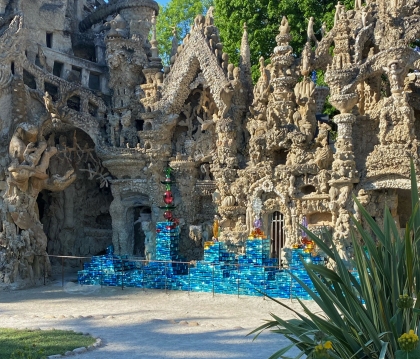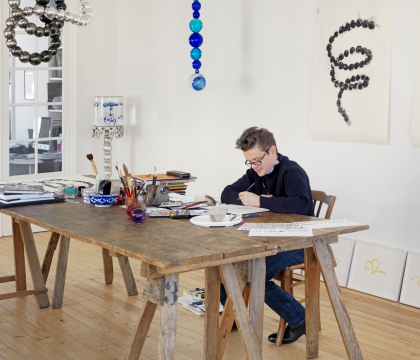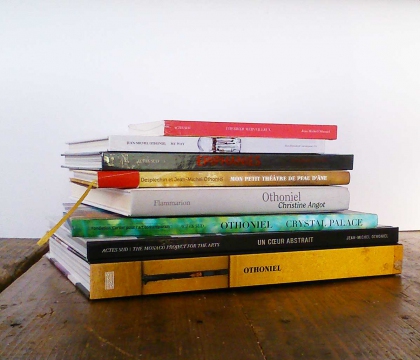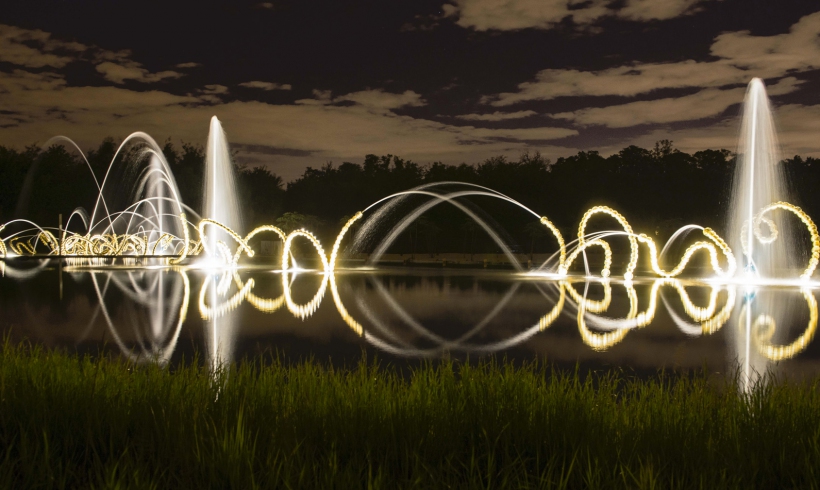
Les Belles Danses (The Beautiful Dances)
May 2015, Château de Versailles, France
Les Belles Danses (The Beautiful Dances)
May 2015, Château de Versailles, France
Discover the artworkLes Belles Danses (The Beautiful Dances)
These fountain sculptures were created for the Water Theatre Grove in Versailles, in a permanent installation commissioned for the Château de Versailles gardens.
The Water Theatre grove is open daily.
Fountain shows are scheduled on Tuesdays, Saturdays and Sundays from 10 am to 6 pm and last 20 minutes.
Saturdays nights the fountain show runs non-stop from 8:35 pm to 10:45 pm.
For the first time in three hundred years, the gardens of Versailles have welcomed a permanent art installation: a contemporary artwork by Jean-Michel Othoniel, who won an international competition with landscape designer Louis Benech to revitalize the Water Theatre grove.
This monumental project, which was completed in September 2014, will be inaugurated with three fountain sculptures that poetically evoke the Sun King dancing on the reflecting pools. The Water Theatre grove, witness to the splendours and vicissitudes of time, has metamorphosed throughout history. An open-air theatre, designed by André Le Nôtre from 1671 to 1674, was redesigned in the early 18th century, then destroyed under Louis XVI to make way for the Round Green grove, a layout of lawns and walkways. The grove lasted from the 19th century until the great storm of December 1999, when it was severely damaged and closed to the public.
The restoration of the Water Theatre grove is now being completed. In the spirit of André Le Nôtre, Jean-Michel Othoniel’s fountain sculptures recall ancient splendours, gold statues and the monarch dancing before the court; the Sun King's presence will be strongly felt by visitors.
Important projects often begin with an encounter, and although Jean-Michel Othoniel and Louis Benech had never met, they shared a common passion for plants. Othoniel has frequently created installations for gardens: in Venice and Granada, in Paris and Tokyo. Benech, a landscape architect, is known for the many garden and park projects he has developed around the world. For the Water Theatre grove, he wanted to collaborate with a contemporary artist whose work would enhance his vision of the garden.
For Othoniel, their encounter offered an exciting window onto new savoir-faire, both technical, in collaboration with Versailles' fountain specialists and hydraulic engineers, and historic, in researching ancient documents that would lead him to make several discoveries.
Together, they wished to create a contemporary garden that was lush, sensuous and welcoming, open to the public year-round, a serene and contemplative stopping place where time stands still, where the gentle music of the fountains and the faint movement of Baroque dances hang in the air.
From exhibitions to public commissions, the body is a recurring theme in Jean-Michel Othoniel’s work. While often literally absent, its presence is suggested by a mandorla, or a twisted knot that recalls curled-up bodies. In Versailles, the artist evokes the body of King Louis XIV, whose presence is also felt in the garden statues. From libraries to auction houses, from Boston to Paris, Jean-Michel Othoniel carried out extensive research about the gardens. He eventually found connections between Le Nôtre's embroidery-like parterres and the sovereign’s adorned finery; the King's complex itinerary through the gardens, described in detail in his short book Manière de montrer les jardins de Versailles (The Way to Present the Gardens of Versailles); and the calligraphic mouvements invented in 1701 by the choreographer Raoul-Auger Feuillet, who taught the King to dance in court.
Feuillet's book inspired the artist's first watercolour sketches of his three fountain sculptures: informed by baroque dances such as the rigaudon and bourrée, Othoniel created pearls that trace golden arcs onto the surface of the reflecting pools. With their joyful leaping motion, The Beautiful Dances fulfill the artist’s goal “to reveal Louis XIV in a contemporary manner.”
